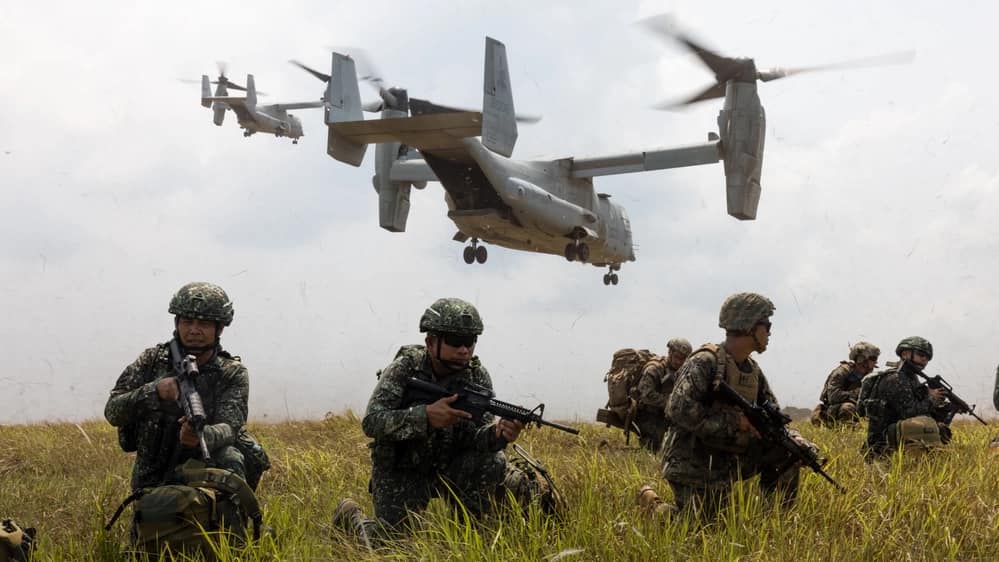Already a subscriber? Make sure to log into your account before viewing this content. You can access your account by hitting the “login” button on the top right corner. Still unable to see the content after signing in? Make sure your card on file is up-to-date.
The United States and Philippines have officially launched their largest combat exercises near the South China Sea.
The exercises, which began on Monday, involve over 16,000 personnel from the US and the Philippines, alongside 250 troops from France and Australia. Scheduled to conclude on May 10, the “Balikatan” exercises, which translate to “shoulder-to-shoulder” in Tagalog, assert no direct opposition to any nation; however, they prominently feature scenarios that simulate conflicts in the disputed South China Sea.

This area has been a hotspot for confrontations, with Chinese Coast Guard vessels engaging in aggressive tactics like water cannon use and blocking maneuvers against Philippine navy ships, leading to both injuries and damages. Colonel Michael Logico of the Philippine military highlighted the strategic intent behind the drills, stating, “We’re dead serious about protecting our territory — that’s why we do these Balikatan exercises.” This year’s drills focus primarily on territorial defense, highlighting the escalating disputes with China over maritime boundaries and sovereignty.

Echoing the significance of these drills, US Marine Lt. Gen. William Jurney said during the opening ceremony that the exercises reaffirm the 1951 Mutual Defense Treaty between the US and the Philippines, demonstrating its practical relevance beyond merely a formal agreement.
Amid these exercises, China has voiced strong objections, particularly against deploying a US missile system in the northern Philippines, which, according to Chinese Foreign Ministry spokesperson Lin Jian, stokes regional tensions and risks misjudgments. Lin said, “The US move exacerbates tensions in the region and increases the risk of misjudgement and miscalculation. The Philippines needs to think twice about being a cat’s paw for the US at the expense of its security interests and stop sliding down the wrong path.






